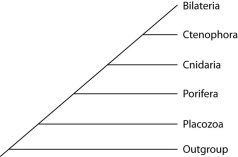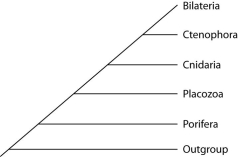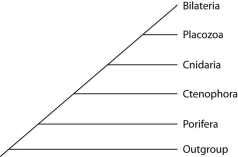Multiple Choice
Placozoan evolutionary relationships to other animals are currently unclear, and different phylogenies can be created, depending on the character used to infer relatedness. Sponges have no tissues, but about 20 cell types. Tp (Trichoplax adhaerens) produces a neuropeptide almost identical to one found in cnidarians. The genome of Tp, though the smallest of any known animal, shares many features of complex eumetazoan (even human!) genomes. The next three questions refer to the phylogenetic trees that follow.
I. 
II. 
III. 
-Which phylogeny has been created by emphasizing a protein found in placozoans?
A) I
B) II
C) III
Correct Answer:

Verified
Correct Answer:
Verified
Q10: You have before you a living organism,
Q25: If the current molecular evidence regarding animal
Q26: According to the evidence collected so far,
Q28: Fossil evidence indicates that the following events
Q29: <img src="https://d2lvgg3v3hfg70.cloudfront.net/TB5463/.jpg" alt=" The previous
Q31: Trichoplax adhaerens (Tp) is the only living
Q32: The most recently discovered phylum in the
Q33: Some researchers claim that sponge genomes have
Q34: What does recent evidence from molecular systematics
Q35: The last common ancestor of all bilaterians